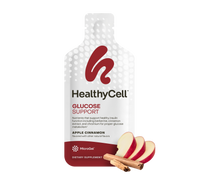Article at a Glance
- Vitamin B6 is one of the 13 essential vitamins you need in your diet for protein metabolism.
- Vitamin B6 is found in plants and animal products. It is recommended for vegans, vegetarians, and those following a plant-based diet to use nutrition supplements of fortified foods to obtain adequate levels of this nutrient.
- Deficiency is uncommon but often seen with multiple other nutrient deficiencies.
Water-soluble B vitamins are easily flushed out of your body, which, luckily, makes it difficult for toxic levels to accumulate. Read below to find out which water-soluble B vitamin can become toxic, and at what dosage it can cause adverse events …
What Is Vitamin B6?
Vitamin B6 is one of the 13 essential vitamins you need in your diet because your body cannot make enough on its own.
Like all B vitamins, vitamin B6 is water-soluble so it dissolves in water. This dissolution allows your body to easily flush out any excess instead of storing it in your liver or fat tissue.[1]
Why You Need Vitamin B6
Vitamin B6 is essential for many of your body’s physiological functions:[1,2]
- Synthesizes amino acids.
- Converts the amino acid tryptophan into the essential vitamin niacin.
- Helps produce the neurotransmitters dopamine and serotonin, which regulate sleep and mood.
- Research shows that vitamin B6 may play a role in preventing cognitive decline, cardiovascular disease, and cancer.
Where to Get Vitamin B6
Dietary sources rich in vitamin B6 include:[1,3]
- Garbanzo beans
- Fish
- Beef
- Chicken
- Bananas
- Potatoes
As vitamin B6 is mostly found in animal food sources, it is recommended for vegans or vegetarians to eat higher levels of vitamin B6-fortified cereals or to use a nutritional supplement.[3] Supplementing your diet with vitamin B6 using MICROGEL™ technology is best for optimal absorption. This delivery system allows you to fully absorb nutrients into your bloodstream and then into your cells, where they work to improve health.
The Forms of Vitamin B6
Vitamin B6 is a generic label for different compounds:[2]
- Pyridoxine – found in plants
- Pyridoxal – found in animals
- Pyridoxamine
- Pyridoxal 5-phosphate (PLP)
- Pyridoxamine 5-phosphate (PMP)
PLP and PMP are the active forms that are circulated and absorbed. Pyridoxine, pyridoxal, and pyridoxamine are all converted into PLP in your body.[1,4,5]
How Much Vitamin B6 Do You Need?
Everyone is different, and certain factors such as your age, sex, or health will affect your unique nutritional needs. To provide a general guide, the Food and Nutrition Board (FNB) establish the Recommended Dietary Allowance (RDA) to meet the needs of most healthy individuals. The RDA for vitamin B6 in both men and women range:[3]
Vitamin B6 RDA
• Infants (0 – 12 months): 0.1 – 0.3 mg/day AI
• Children (1 – 8 years): 0.5 – 0.6 mg/day
• Adolescents (9 – 18 years): 1 – 1.3 mg/day
• Adults (19+ years): 1.3 – 1.7 mg/day
• Pregnant and nursing women: 1.9 – 2 mg/day
If you have a preexisting health condition, concern, or take prescription medication, it’s important to talk with your doctor or registered dietitian about your nutrition, especially when choosing which supplements and dosages are optimal for your health.
Toxicity
Although your body can easily flush out B vitamins, vitamin B6 in the pyridoxal phosphate form has the potential to be toxic because it is stored in your muscles and liver. Toxicity is typically seen when taking doses of 1–6 grams a day for over a year. Symptoms of toxicity include numbness in extremities, trouble walking, and other neurological issues. A tolerable upper intake level (UL) has been established to prevent adverse reactions.[5]
Vitamin B6 Tolerable Upper Intake Level (UL):
• Infants (0 – 12 months): – mg/day
• Children (1 – 8 years): 30 – 40 mg/day
• Adolescents (9 – 18 years): 60 – 80 mg/day
• Adults (19+ years): 100 mg/day
Anyone who is under the care of a physician and uses vitamin B6 for a medical reason is excluded from the UL.
Vitamin B6 Deficiency — What Are the Symptoms?
Vitamin B6 deficiency is uncommon and would most likely be accompanied by other nutrient deficiencies such as vitamin B12 and folate. Those who have impaired metabolism, eat a vegetarian or vegan diet, who are undernourished, suffer from alcoholism, have poor renal function, or who are diagnosed with autoimmune disorders are at risk for deficiency.
Symptoms of vitamin B6 deficiency include:
- Microcytic, hypochromic anemia, which impairs red blood cells from delivering oxygen to tissues due to the cell’s small size
- Dermatitis, such as dandruff or scaling skin around the mouth
- Swollen tongue
- Depression
- Confusion
- Fatigue
Vitamin B6 in Healthycell Products
Bioactive Multi — Best for absorption!
The form of vitamin B6 contained in Bioactive Multi is pyridoxine hydrochloride. The dosage of vitamin B6 is 3.4 mg, which satisfies 200 percent of the Daily Value (%DV).
The form of vitamin B6 contained in Healthycell Pro is pyridoxine hydrochloride. The dosage of vitamin B6 is 5 mg in the morning formula and 5 mg in the evening formula, for a daily dosage of 10 mg, satisfying 500 percent of the Daily Value (%DV).
The form of vitamin B6 contained in Healthycell is pyridoxal 5-phosphate. The dosage of vitamin B6 is 8 mg in the morning formula and 2 mg in the evening formula, for a daily dosage of 10 mg, satisfying 230 percent of the Daily Value (%DV).
Conclusions and Recommendations
- Sources of vitamin B6 include a variety of dietary options, fortified foods, or nutrition supplements. The best way to supplement vitamin B6 is with MICROGEL technology.
- Vitamin B6 is a water-soluble vitamin that your body can store, which can cause negative health consequences when mega-dosing.
- Deficiency is uncommon in the U.S. but will result in symptoms of anemia, dermatitis, cognitive issues.
References
1. McGuire, Michelle, PhD, and Kathy Beerman A., PhD. “Chapter 10 Water-Soluble
Vitamins.” Nutritional Sciences: From Fundamentals to Food. 2nd ed. Australia:
Thomson/Wadsworth, 2007. 456-458. Print.
2. “Vitamin B6.” National Institutes of Health. U.S. Department of Health
and Human Services, n.d. Web. 07 Dec. 2016.
3. Marcason, Wendy, RDN. “What Are B-Vitamins and Folate?” Eat Right. Academy of
Nutrition and Dietetics, 14 Dec. 2015. Web. 14 Oct. 2016.
4. Brasaemle, Dawn, PhD. “Folate Lecture.” Rutgers University – Vitamin B6.
New Brunswick. 2015. Lecture
5. Higdon, Jane, Ph.D, Victoria J. Drake, Ph.D, Barbara Delage, Ph.D, and Jesse F.
Gregory, Ph.D. “Vitamin B6.” Linus Pauling Institute Micronutrient Information Center.
Oregon State University, 22 Aug. 2016. Web. 09 Dec. 2016.




